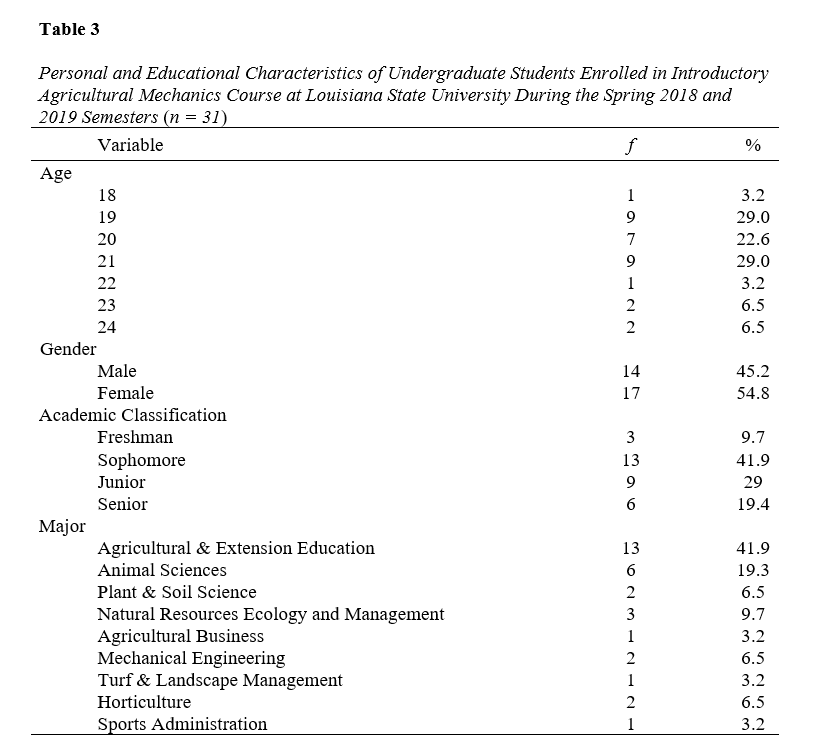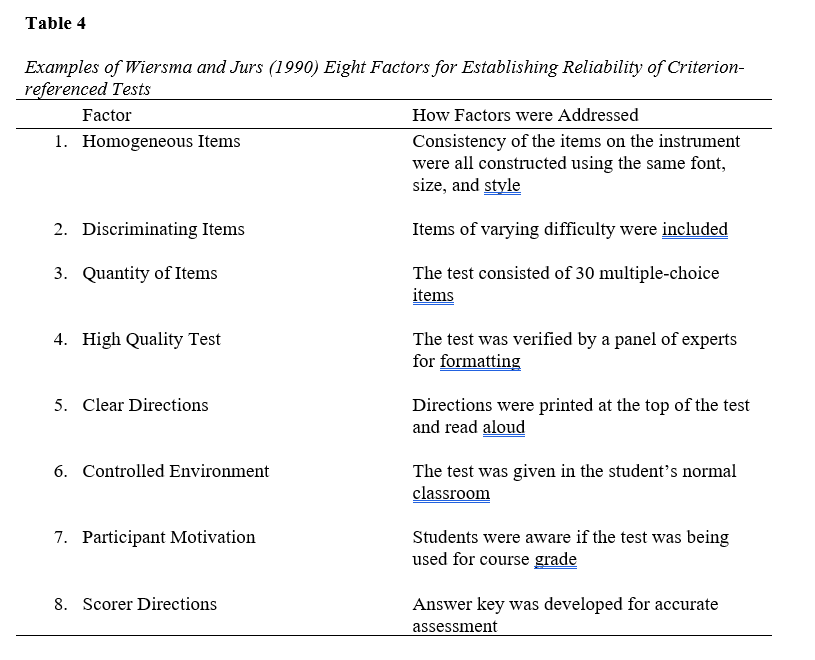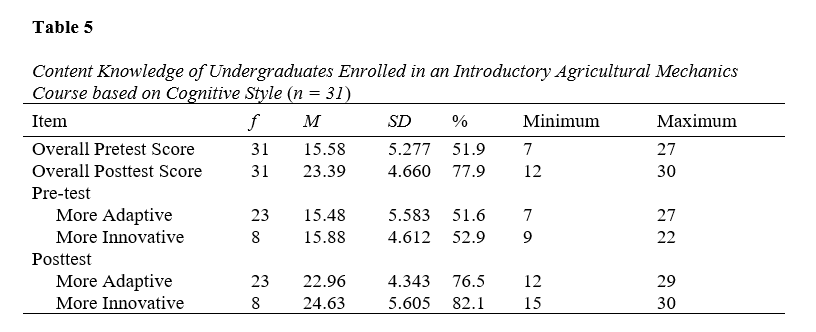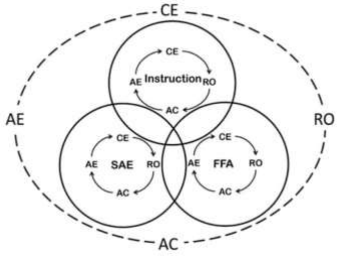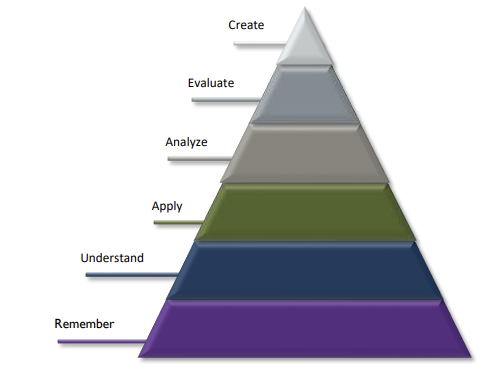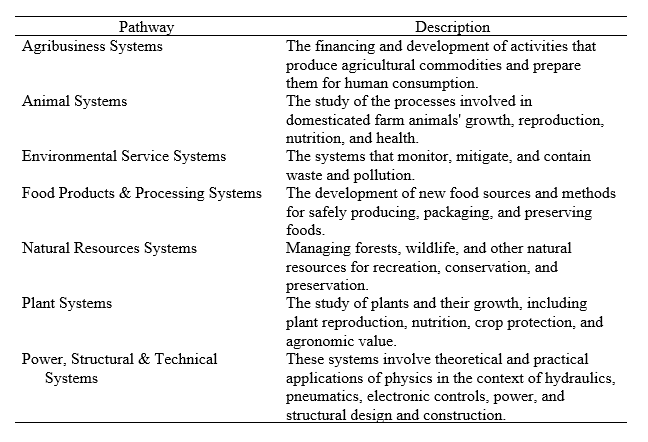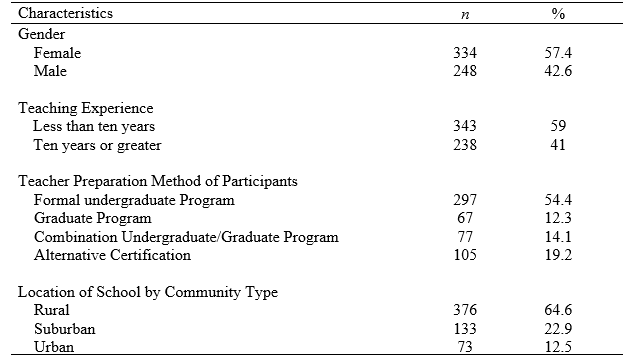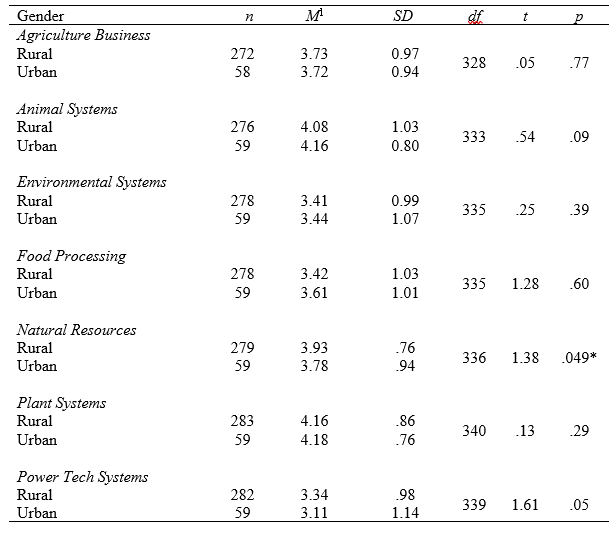Carrie Stephens, Professor, The University of Tennessee, cfritz@utk.edu
Haley Kelso, Graduate Assistant, The University of Tennessee, hkelso@vols.utk.edu
Sharon Jean-Philippe, Professor, The University of Tennessee, jeanphil@utk.edu
Jennifer Richards, Associate Professor, The University of Tennessee, jennifer.richards@utk.edu
Natalie Bumgarner, Associate Professor, The University of Tennessee, nbumgarn@utk.edu
Liz Eckelkamp, Associate Professor, The University of Tennessee, eeckelka@utk.edu
Shelli Rampold, Assistant Professor, The University of Tennessee, srampold@utk.edu
Neal Eash, Professor, The University of Tennessee, neash@utk.edu
Brent Lamons, Assistant Professor of Practice, The University of Tennessee, blamons1@utk.edu
Abstract
The dynamics of agriculture in Botswana have been deeply rooted in traditional cultural values and have been shaped by the close connection between men and agriculture. Specifically, the dominance hierarchies that existed are those related to realities and relationships between those of humans and animals and their interconnectedness. The purpose of this study was to explore the leadership journeys of eight women in Botswana who have been involved in production agriculture. The central research questions asked were: (1) What lived experiences helped you obtain your agricultural position; and (2) What leadership characteristics do you identify as essential in your success? The participants for this study consisted of eight women in agriculture from Gaborone and Mabalane, Botswana. The methods employed to collect data in this study included three to four hour in-depth, audio-taped interviews. The researchers then discussed each individual’s coding schematic and emerged seven themes: (1) journey in agriculture; (2) networking and mentoring learning initiatives; (3) leadership and management; (4) family structure; (5) Botswana culture and agriculture; (6) awareness and shift of agriculture in Botswana; and (7) perspectives on values and motivations. Women who seek leadership opportunities, specifically those in the agricultural industry, would benefit from understanding how the participants of this study first became inspired and how they were encouraged to seek out advancement in their chosen career path. These shared experiences can communicate a framework for women who are inspired to lead in the agricultural industry – particularly in international settings.
Introduction
The past few decades saw the emergence of many female leaders in agricultural professions (Brawner et. al, 2020; Kleihauer et al, 2012; Stephens et al., 2018). These leaders have overcome numerous obstacles, yet their tenacity and persistence yielded success within their industry. However, the published literature was nearly devoid of case studies outlining the barriers that they overcame, and the leadership skills needed to obviate the roadblocks (Carroll et al., 2021; Cline et al, 2019; Frankel et al, 2023; Kleihaur et. al, 2013). Our heuristic approach evaluated successful Batswana female entrepreneurs through lengthy face-to-face interviews and observations in their workplaces. Documentation of their successes and leadership skillsets could provide groundwork for assisting females in leadership development in an emerging African nation.
In Botswana, the dominance hierarchies that existed were those related to realities and relationships between those of humans and animals. (Hovorka, 2012). Historically, Batswana women were perceived socially as housewives and expected to bear children, and those who could not bear children held a lesser societal status (Ntseane, 2004). This value system also existed in the agricultural sector. While women were historically seen as rural caretakers, Botswana men were offered the luxury of raising cattle — as more or less a sole occupation —because they were seen as suitable to raise the prominent commodity associated with wealth —cattle (Horvorka, 2012). Recently, new urban and commercial agriculture spaces have emerged, empowering women as poultry producers, albeit in varying ways and with varying outcomes, relative to their initial positionalities and relative to men and cattle respectively. Therefore, “gender and species status, roles, places and use values in Botswana are inherently dynamic and offer avenues for symbolic and material re-positioning” (Hovorka, 2012, p. 879).
The empowerment of women in Botswana has led to increased interest and presence of women in the agricultural labor force in Botswana, specifically in urban agriculture (Crush et al., 2011). From 1990 to 2019, the percentage of women involved in Botswana’s labor force increased from 49.8% to 68.5% (The World Bank, 2020). Despite these labor force changes, women in Botswana were considered poor, as a higher proportion of female-headed households were considered poor or very poor (Government of Botswana, 2020).
While the Botswana Government has expressed commitment to gender equality, they are still experiencing difficulty implementing appropriate initiatives (Botlhale, 2020). Further, institutional-level initiatives have been found insufficient in changing deeply rooted ideologies pertaining to the roles of women (Botlhale, 2020). As such, initiatives at the village level may hold promise for enhancing women’s empowerment in Botswana (Must & Horvorka, 2019). The results of this study can assist policy moves that can further raise status of women in Botswana.
Currently, the overall governmental economic initiatives in Botswana revolve around diamonds, but more efforts are being made to increase access to technical education and initiatives in tourism and agriculture (Reuters Staff, 2018). However, the overall decision-making in Botswana has been influenced by males, which has hindered the ability of women to advance or have significant influence on national decisions (Government of Botswana, 2020). Therefore, this study was undertaken to provide insight into a workforce that displays diversity, productivity, and quality by describing women’s experiences on each of their journeys, and how they are aspiring to reach their leadership goals within the agricultural industry in Botswana.
Theoretical Framework
Situational and authentic leadership theories guided this study. Situational leadership was derived from the idea by Hersey and Blanchard (1972). The model is constructed to focus on the maturity of the individual who is being supervised. Maturity is defined as “the capacity to set high but attainable goals, willingness and ability to take responsibility, and education and/or experience of an individual or a group” (p. 161). The model is divided into quadrants and represents an individual’s personality and how the individual progresses as he/she matures. The first quadrant, high task/low relationship, represents an individual that is more concerned with the tasks to be accomplished, and is not concerned with the personal feelings of their cohorts. An individual that is concerned with the task of a project but also takes into consideration the feelings of their cohorts represents the second quadrant, high task and relationship. An individual who is concerned with their cohort’s personal feelings rather than completing the task represents the third quadrant, low task and high relationship. An individual who is not concerned with the task of the project or the personal feelings of their cohorts represents the last quadrant, low task and relationship. Supervisors need to adjust their leadership style as the individual matures. In the context of this study, situational leadership is an applicable lens because every participant derived their leadership experience from a unique situation. Situational leadership theory can thus provide further insight into how participants’ unique backgrounds and positions explain their actions and interactions as leaders.
Authentic leaders are those “who are deeply aware of how they think and behave and are perceived by other as being aware of their own and others’ values/morals perspectives knowledge and strengths; aware of the context in which they operate; and who are confident, hopeful, optimistic, resilient, and of high moral character” (Avolio & Gardner, 2005, p. 321). The key components of an authentic leader are positive psychological capital, positive moral perspective, leader self-awareness, leader self-regulation, leadership process/behaviors (positive modeling, support self-determination, personal and social identification), follow self-awareness, follower self-regulation, follower development, organizational context, and performance (Avolio & Gardner, 2005). Researchers believed the women had evolved into authentic leaders through their life experiences; thus, the reason for utilizing the authentic leadership framework.
Purpose and Central Research Questions
The purpose of this study was to explore the leadership journeys of eight women in Botswana who are involved in production agriculture. The central research questions asked were: (1) What lived experiences helped you obtain your agricultural position; and (2) What leadership characteristics do you identify as essential in your success?
Methods and Procedures
To fully comprehend the experiences participants shared, the current study was performed using the qualitative mode of inquiry (Lincoln & Guba, 1985). The qualitative approach is justified in that it seeks to understand the phenomenon (Flick, 2014) of women’s experiences of their leadership journeys. A phenomenological approach was utilized to gain entry into the conceptual world of the women in order to understand how and what meaning they construct from their childhood, adulthood, personal, work, and leadership experiences (Lincoln & Guba, 1985). This approach is appropriate because the researchers explored a phenomenon and what the Botswana women experienced in agriculture.
The participants for this study consisted of eight women in agriculture from Gaborone and Mabalane, Botswana, two contrasting population settings. Mabalane is a small village (population~1,000); Gaborone is the capital city (population ~250,000). The reason only eight women were selected was due to researchers limited duration in country and we wanted ample face-to-face interaction with each participant. These women were individually identified from an international non-profit (Dream Academy) and consultation with the Botswana University of Agricultural and Natural Resources faculty who worked in community outreach. These women were considered leaders amongst their peers in their selected agriculture venue and had received recognition for their innovation in commercial agriculture sector. The women were middle-aged, urban and rural backgrounds, and they were all engaged in production agriculture. In an effort to protect the identity of the women, there will be limited background information given about the participants and participant numbers were assigned (Woman 1, 2, 3, 4, 5, 6, 7, and 8).
The methods employed to collect data in this study included: (a) interviews, (b) field observations, and (c) documents and pictures. Gathering information in this manner provided the researchers with a bank of data from which themes could be created, interpretations made, and a “rich, full picture of a research situation” painted (Wright 2003, p. 8). Interviews were three hour in-depth, audio-taped interviews, in which the primary researchers asked open-ended, non-leading questions (Lincoln & Guba, 1985). The central research questions focused on having each woman explain her journey (past and present) to her current leadership role. Based on each interview, follow-up questions were asked but based on the flow of the interview, some follow-up questions were unique to each individual. The interviews focused on revealing the influences and experiences that helped to develop each woman into the leader she is today. This open-ended approach enabled the researchers to gain an understanding related to each woman’s unique lived experiences (Lincoln & Guba, 1985). Observations were conducted before, during, and after the interview sessions by individuals involved with the research project and included taking detailed notes on body language, word descriptions and analysis, and behavior related to the interview and discussions opportunities (eating supper with participant, guided tours, etc.). Additionally, the researchers were participant observers for one to five days in each woman’s environment; the number of days spent with each participant was dependent upon that participant’s personal schedule. A participant observer interacts with the participants in the environment, so they can experience the environment like the participant (Lincoln & Guba, 1985). Lastly, documents (articles, accolades, etc.) that were collected by researchers were related to each woman’s lived experiences. These included pictures of the participants accomplishments, family photos, work experiences, and so forth.
Data were analyzed and coded by five researchers independently. The interview transcriptions were open-coded to discover the main concepts and categories (Lincoln & Guba, 1985). The researchers analyzed the in-depth interviews, along with the researchers’ field notes, which captured the thoughts related to the women agriculturists and their environment. These field notes were used in the data analyses to assist the researchers in recalling what had occurred during the field experience. Furthermore, data were examined using several methods including: identifying significant statements and elements of meaning; creating textural and structural descriptions; and recognizing descriptions which revealed commonalities among the participants’ experiences (Lincoln & Guba, 1985). The researchers then discussed each individual’s coding schematic and agreed upon seven themes: (1) journey in agriculture; (2) networking and mentoring learning initiatives; (3) leadership and management, (4) family structure; (5) Botswana culture and agriculture; (6) awareness and shift of agriculture in Botswana; and (7) perspectives values and motivations. The journey in agriculture was further divided into two sub-themes: (a) significant family experience and how they were raised; and (b) initial agricultural entrepreneurship. The networking and mentoring learning initiatives included two sub-themes: (a) social media; and (b) mentors. Leadership and management was further divided into three sub-themes: (a) leadership style; (b) employee relations; and (c) values and trust. Botswana culture and agriculture had two sub-themes: (a) personal challenges with being a female in the industry and (b) successes. Awareness and shift of agriculture in Botswana was divided into three sub-themes: (a) culture; (b) how Botswana views women in agriculture; and (c) how women in Botswana view agriculture.
In an effort to reduce the impact of bias on the data collected, several validation strategies were employed to document the accuracy of this phenomenological research study. Credibility was established through prolonged engagement in the field and the triangulation of data sources, methods, and investigators (Lincoln & Guba, 1985). From the researchers’ observations, thick descriptions of the women’s life experiences and environments were constructed to help readers determine the transferability of the research. Dependability of the study was established through peer-review by another researcher trained in qualitative analysis who had not conducted the interviews. Additionally, member checks from participants related to data, analyses, interpretations, and conclusions were conducted to confirm credibility of the study (Lincoln & Guba, 1985).
Subjectivity Statement
Prior to launching the study, the eight female researchers reflected on qualities possessed which may have impacted the relationship with women in the study. The researchers hold a strong passion for agriculture and women in the agricultural field, which may result in a more focused analysis on each woman’s journey to their current leadership position. The researchers consist of three full professors, two associate professors, two assistant professors, and one graduate student who are all involved in the agriculture field. Each female involved in the research of this study analyzed the data and have moderate feminist beliefs. To keep a neutral viewpoint and impartial position, the researchers reflected on their biases of the research topic, assumptions of the outcomes of the study, and each occasion of contact with the women agriculturists. In addition, the researchers structured main and probing questions in a way that did not lead the women in their responses.
Findings
Theme One: Journey in Agriculture
The women interviewed were immersed in agriculture learning experiences through their family, which later shaped views and perceptions of the world in which they live and launching them as leaders in their chosen industry. The following results are divided into two sub-themes: (1) significant family experience and upbringing, and (2) initial agriculture entrepreneurship.
Women 1, 2, 7 and 8 explained it was normal for children in their culture to be involved in farming, whether it was milking cows, rearing pigs, or growing a garden. For example, Woman 7 expressed that her love for horticulture came from her mother, because they always had a garden, would plant any fruits or vegetables they could get, and lived by the saying, “anything that you plant, grows.” While it is normal for those currently involved in agriculture to have been raised in a farm setting, three of the eight women interviewed had not been directly exposed to the agricultural industry through their childhood. Instead, their passion for agriculture evolved in adulthood. Woman 3 explained:
I am 28 years old. I grew up in the city, so farming was sort of a luxury to me. I used to live in a flat growing up, so we mostly just seen (sic) vegetables and meat in stores. Then on some holidays my Mom would take us to our grandparents’ house, and then we would go to the farm, which was a surreal experience for me because of growing up in the city.
Not only did some of these women grow up in the city which hindered their exposure to agriculture, but Woman 8 revealed:
I am the first born of four kids, raised by a single mother. I grew up, my whole life in Gaborone, so normally and culturally the farm was always put on the father. Since we had a single mother, we found that we did not get to have a lot of that experience. Because I had a grandfather who had a farm, we would go there and then just come back home because it was right outside of Gaborone. So, I never really got to experience that farm life because I more or less grew up as a city girl. I was fine with it, but when I had my own kids, they did not know anything about animals, and my husband and I discussed that we did not want to live the farm life because of our educational backgrounds.
Although some of these women did not experience agriculture throughout their upbringing, each had an internal passion to pursue a career in agriculture. Four out of the eight women interviewed explained they started their careers not actively involved in the agricultural industry, but began in the agriculture industry due to outside influences who emphasized the importance of agriculture. Woman 5 explained:
I did not see a reason of going to school to do what is already in me, so I did not go to school to do agriculture because we do agriculture ourselves. That is our everyday life. I am beginning to develop a big interest, and in fact the reason why I was invited here is because I asked help (sic) to start a farm. I want a farm and I want to do small stock, like goats, sheep and possibly chickens. It has been in me and I do not know why, but it has been in me and I want to do it. I am determined to do it and to keep small stock, and that is my interest. The plowing part of it is vegetables.
However, some women interviewed initially pursued careers in agriculture. Women 1, 2, 3, 4 and 8 have become successful agriculturists in their specific fields, including poultry, crops and even a petting farm. For example, Woman 8 revealed she wanted to have her own orchard because her grandmother was involved in the agricultural industry and enjoyed it. However, she soon realized her passion for impacting youth through building a petting farm and expressed she “loved what she saw” when she dug deeper into the petting zoo agricultural field.
Theme Two: Networking and Mentoring Learning Initiatives
There are developing networking and mentoring initiatives in Botswana. The eight women interviewed described their networking initiatives mainly existed through WhatsApp and social media sites. However, forming support groups is often difficult due to competitive environments. Woman 3 elaborates:
I have it on social media. The only problem with that is, I am going to group us all into this problem as Botswana we do not like sharing, so we have a problem with that. We have a problem with getting an association together because one farmer may have more chickens than all of us, so if we had to get supply, he would get the supply first. Another problem is getting together, not necessarily stealing ideas, but we are all feeding our chicks the same thing..
Mentoring others in the field of agriculture is slightly new in Botswana. The interpretation from the women interviewed was agriculturists mainly did their own thing. Woman 1:
This (mentoring) is something that is quite new to us because we have been very fragmented as a community in terms of the farming thing. But just recently realized that there are farmers that I did not know were out there that are coming on board and sharing ideas, it is really great. But we did not have that at all. And I think that’s been one of the downfalls of Botswana agriculture, was that there was not this cohesive group of people, everybody was doing their own thing.
Woman 1 also described that agriculture is on the rise due to agricultural specialists and the mentoring they provide. “There is a chain of agricultural shops here in the country that have some agricultural specialists, which is something we have not had, and they have started a group and there is loads of information coming through on that. “So agriculture is really on the rise here.” However, if you are new to the agricultural industry some women may find it difficult to be accepted into the agricultural circles. Woman 2 explained:
In each and every district, there is an agricultural office. So on our side, there is an agricultural office, but we are supposed to have an association. We will often times find that within an association, those people that have been there before, they make it difficult for other people to join. They often say, ‘Oh I do not know how you are supposed to join’, but it is often the head of the association who is saying that. They say this because they do not want other outside people to join because they want to sell within their own farms and not against contenders (Woman 2).
All eight women believed mentoring was important and needed, especially for young people. However, most agreed mentoring may cause competition within the industry. Woman 8 explained, “mentoring is good, we are just not sure if it will create competition that we are just not looking for.”
Theme Three: Leadership and Management
All eight of these women have seized a leadership role within the agricultural industry. Each woman has a unique leadership style they have developed throughout their journey, and from their experiences as leaders, they also have gained a better understanding of their values. The following results are divided into three sub-themes: (a) leadership style, (b) employee relations, and (c) values and trust.
When asked to describe their leadership style, the women’s responses were diverse. For example, Women 4 stated:
I would say that I am born leader. Yes, I was born a leader. I’ve always been showing that, even at home. As a first born, you are a leader. You are just a born leader because you are leading a family. I ended up developing the leadership skills not at school, but at home because I had to lead my family and lead my siblings. I am just a born leader, and apart from that, I think the Lord has also just given me that leadership role. Even at church, the Lord has given me that leadership role.
Whereas, Women 1 expressed she believes in trained leadership.
I feel like I train them and then I give them space, but I show them the value of the customer. Teaching them how to talk with them and interact with them, especially being patient with the children. We have a Facebook page where we receive a lot of comments and questions, so I motivate them to interact with the customers and realize that when they get comments about the staff being amazing, they are not talking about me they are talking about you…Train them, give them space, and tell them that I trust them. If they have challenges, I let them know that I am here.
However, their answers were similar in terms of outlook on leadership and their positional power in the agricultural industry. Woman 2:
I would say my approach is effective. I would call myself a good leader becausebefore, I was working under other people, so I started to tell myself that I wanted to do something different. So, the people that I am above, I am going to make sure I listen to them, and that is what made the difference… I always say to them “I want you to be yourself when you do your job.” I only advise if I feel that is not going to work, but what I normally do is that I lay everything out on the table and then from there, I say “do it the way that you can do it.” After that, I just add what needs to be added
These eight women also have to be effective leaders of those with whom they work and interact, such as their employees or customers. For example, Woman 5 further explained how she cannot serve as a true leader to others until she defines her own leadership abilities:
I lead not because I am at the top; leadership is not about being at the top. You can lead from there, but you can also lead from the bottom. You can lead this and any organization even if you are not the secretary or the president, but you lead from the bottom up. You make sure you are leading others properly because you are leading from the bottom. You do not have to have a title to be a leader. Also, if you cannot lead your own life, then you cannot lead other people. You have to start with your own life and lead your life. Once you start leading in your own life, that is when you can lead other people and help other people.
Most of the women exhibited strong relationships with their employees, as they depend on employee support and work ethic in order to have a successful business. Woman 1 further explained she did not attend college and study agriculture, but her staff has been helpful about positively growing the business. However, some of the women explained difficulties in recruiting and retaining reliable and effective staff members. For example, Woman 3 expressed “we are not your friend nor your parent, you are here to work…It is often difficult to train and keep some of the employees.”
Not only did these eight women have the passion to strive to be successful at what they do, but they valued and put trust into their employees. Some of these women have a weakness when it comes to putting their full trust into their staff while staying loyal to their values, such as Woman 2 who stated she can be too forgiving and lenient at times because she is afraid to get rid of staff who have an unfortunate homelife. Woman 1, however, has customer values in mind when she explained how she strived to keep her business open 365 days a year to make it more appealing and beneficial. Woman 8 revealed being able to depend on and trust your staff, ultimately impacts the customers and the outcome of the business.
I think that one of the things, especially when you own a business, that you will always not be there. I have to trust that things will go, and we have to communicate. If we have young people, staff need to go on their level, talk their language and be with them. We are also very hands-on. It is also special to receive ideas from my staff as well, and I make sure I show my appreciation.
Theme Four: Batswana Family Structure
Woman 3 stated:Agriculture for these eight women involves family and/or is a family operation. “I was excited because I got time to spend with my mother, a lot of time, and it is just very peaceful when you are in an agricultural environment opposed to the hustle and bustle of the city. So that is where I found my new love and passion. I have moved to the farm and I am raising my son there” . In addition, the women spoke highly of their children’s love for agriculture. “I have four kids, three girls and one boy. My boy is someone who is active. We have got chickens at home right now and he is feeding them, and tomorrow he is going to the land to help my mother (Woman 6). Woman 8 expressed that she has two children and “They are really hands-on and they love it [agriculture]…They are always out here helping and getting to know things, and it is really like a family business.”
Some of the women were married and the others were not. However, of the married women, spousal support was crucial to their success in agriculture. Woman 2 stated:
I will say, he is supportive because he knows I do not like driving. When my kids were still in school, and they were in school while I was working, he use(d) to drive me to the farm. Even now sometimes, he will drive me out to the chicken house and even though he does not get out, he still drives me because he knows I do not like to drive.
Woman 1 even commented how she could not operate her agricultural business without her spouse. “I was just saying we could not operate without him. There is a lot of mechanical stuff that does go on, and obviously he is a mechanic at trade and is extremely hands-on. He has his own business, but he is very hands-on with what is going on here.” Woman 8 classified herself as a lucky girl due to her spouse’s support and commitment to her agricultural initiatives.
Theme Five: Botswana Culture and Agriculture
Women agriculturists in Botswana recognized the culture in which they were raised was different than the current cultural climate. These changes have greatly impacted them personally and professionally as challenges and successes have surfaced. The following results were divided into two sub-themes: (a) personal challenges and (2) successes by being a female in the industry.
Most of the women interviewed described Botswana as a difficult country in which to reside because of how they are viewed and treated as agriculturists. Although these women were striving to make a change for other women and youth seeking to be successful agriculturists within the industry, Botswana was making it difficult for them. Woman 3 explained how each part of the industry was viewed differently in Botswana depending on their gender and capability. Woman 3:
Well in the poultry industry, they have made it deserving for women and for the other industries, we can penetrate them but they are mainly for men, like the cows, pork and goats, and yes women can get into them, but we are always put on the backburner. “No women cannot do that.” ‘It’s too much work.’ ‘It’s tough and dangerous.’ ‘You can go try chickens.’ Well they say that it is easier. It is less labor intensive.
Woman 4 also revealed her thoughts on how Botswana was influencing women and the agricultural industry. Woman 4:
Yes, it is men driven. However, women are still going to trade shows and exhibitions where we get to meet with different people from different areas and at different angles. We are also trying to show to other women and youth that they should also come up to these events, and show them how it can help them …The problem is that the government and the associations are not supporting these grants, even though that is where it all starts.
These women have overcome most of the challenges that being a female agriculturist in Botswana presents, and they often achieve great success as women leaders within the agricultural industry. Woman 1 illuminated how food outlets and large customers have helped her business and has brought her successful cash flow. Woman 1 now has the ability to produce and distribute more agricultural products. In addition, Woman 4 expressed advancing her agriculture practice:
There was this occasion that had come up from the government about granting land for tomatoes, so I sort of was juggling and fate just helped me decide to grow tomatoes for about 10 months. Because it was really hard work, I learned that if you can plant a tomato you can do anything. I am actually thinking of doing dairy, but for beginners I want to do chickens, eggs and then broilers.
Theme Six: Awareness and Shift of Agriculture in Botswana
The eight women interviewed have been influenced and impacted by the agricultural industry. The following results are divided into the sub-themes culture, how Botswana views women in agriculture, and how women in Botswana view agriculture.
Botswana’s culture and the women involved in agriculture also have a significant impact on the industry and how the country utilizes its agricultural services. There are some difficulties women in Botswana have faced regarding financial support for their operations, specifically with government funding. Woman 3 further highlighted the problems she has faced trying to request funds from the government to bolster her facility in the agricultural industry.
Yes, it is men driven. However, women are still going to trade shows and exhibitions where we get to meet with different people from different areas and at different angles. We are also trying to show to other women and youth that they should also come up to these events, and show them how it can help them.
She explains bank loans are considered excessively competitive as the government searches for certain criteria the women must meet, and because it is a competition for funds, women can only apply every four years around election season when they have completed the voting process.
There seems to be an alignment of similarities between how Botswana views women in agriculture and how women in Botswana view agriculture, such as overcoming gender stereotypes and cultural differences. However, the women interviewed for this study reported progress in starting to receive the recognition they deserve. Amongst the women interviewed, most of them agreed that it can be difficult working in the industry as gender specifications seem to be a priority in production agriculture, but women were beginning to overcome these assumptions. Woman 7 explained her thoughts on men versus women in the industry.
Back in the olden days, to me men had always been at the forefront as pertaining to farming. What has changed now is the fact that we now live in a world where men are dominating especially in the work environment, finances, and opportunities to obtain resources. Now that farming has become commercial and a lot of money is being made, a lot more men are becoming more interested because they are in better positions. They are in better positions when it comes to getting financing and buying resources needed, it’s definitely changing. Unlike before when it was the women who were not going into the field in order to take care of the children, women are now starting to milk the cows and the goats, go harvest wheat and more.
In Botswana, women were beginning to initiate leadership roles in the agricultural industry as they inspired those around them through impacting the younger generations. Woman 8 revealed her positive outlook on how women in Botswana view agriculture, and how they are starting to overcome obstacles that once held women back in the industry.
I want to believe there is a positive outlook on it, mainly because it is something that is part of our culture. In our cultural background, we have roles for men and women. You will find that with the rise of single mothers, the balancing is done in everything they do. Women are now fulfilling both roles. In Botswana, anybody can do anything. For example, I know a single girl who is a cattle farmer. You can find the opportunities here for women are open.
Theme Seven: Perspectives on Values and Motivations
Most of the women interviewed overcame obstacles from the industry, government, and other businesses to achieve their leadership positions. They had done so by staying faithful to who they were in terms of values and beliefs. Each participant expressed how difficult it can be to face the agricultural industry as a woman. They also shared how relying on their faith and following through with practices they value had the power to keep them motivated to spread knowledge and positivity to those who can make the industry successful in the future.
The values and motivations the of women interviewed also align with their faith perspectives. Most of these women valued trust amongst those with whom they work, their customers, and both the economy and agricultural industry in Botswana. Woman 4 explained how she is preparing for a successful future for not only her business, but as well as herself as she prepares to retire. Woman 4:
Because I was raising these broilers, I want to help with food security and the economy of the county. I am helping by supplying to others, and by being able to do this business management, I have become very proud of myself. And I am starting to build my business back up, for now just to get by, but also for when I retire.
In order to have a successful future in the industry, these women also have motivational desires that will help them grow personally and professionally. Not only do their families and businesses motivate them to do better, but they have achieved individual goals that have pushed them to take on new challenges that have eventually made them successful. Woman 5 explained how you must be the motivator in all aspects of your life in order to build up yourself and those around you. Woman 5:
As a leader, you are the strength of people and because you are their strength… you cannot crash. When you have crashed or when your strength has crashed, where now do others look? Who do they look up to? What is left? Knowing that people are looking up to you, it gives you that energy.
Another great example is Woman 3, who is hoping and working toward taking over for mother when she steps down. She said, “Well, hoping that my mother steps down and that I can take it… When she steps down and when she cannot do it, I will ready to take over.”
Conclusions
The findings and conclusions from this study were supported by interviews, observations, artifacts collected by the research team while in Botswana. The women developed a niche within their agricultural commodity group and this drove each woman, once established within her field, to be passionate and authentic leaders (Avolio & Gardner, 2004). Also, the eight women highlighted unique views of leadership which include being a positive contributor to the industry; searching for inspiration; encouragement to others; passion about the industry; leading by example; and providing motivation to others. These findings were supported by previous research related to women in agriculture (Brawner et. al, 2020; Kleihauer et al, 2012; Stephens et al., 2018). Furthermore, these women have cultivated personal leadership tactics through lived experiences and time spent in the agricultural industry, similar to the previous research by Brawner et al., 2020.
The women represented a broad range of production agricultural industries (e.g., animal husbandry and horticultural practices) in Botswana. These findings emphasize participants shared lived experiences of leadership, personal and professional challenges, awareness and shifts in Botswana agriculture, and perspectives on faith and values. Other additional values that influence one’s lived situational experiences were environmental conditions and events and influences of learning experiences contribute to career decision making (Hersey & Blanchard, 1976). Moreover, the situational leadership experience and environment in which a woman is raised can influence and shape her career journey, as well as impact leadership aspirations, similar to previous research studies (Brawner et. al, 2020; Kleihauer et al, 2012; Kleihauer et al., 2013; Stephens et al., 2018).
Women who seek leadership opportunities, specifically those in the agricultural industry, would benefit from understanding how the participants of this study first became inspired and how they were encouraged to seek out advancement in their chosen career path. These shared experiences can communicate a framework for woman who are inspired to lead in the agricultural industry – particularly in international settings. Understanding one’s own journey provides the opportunity for reflection on self-value, and recognition of how to work with and lead others. Furthermore, acknowledgement of women in agriculture as leaders can provide a pipeline to expose and foster other women’s pursuit of agricultural careers.
The eight women in this study strived to accumulate and utilize their unique and desired traits and were faced with the difficult decisions of balancing family roles and fighting for success in the industry. As expressed by Woman 8, “You will find that with the rise of single mothers, the balancing is done in everything they do. Women are now fulfilling both roles.” These eight women had not only faced challenges within their leadership roles, but dealt with interpersonal struggles within the industry. They strived to engage with community partners to form shared networks, inspire other women, and organize knowledge acquisition.
Study participants expressed concern with the opportunities for improved knowledge and resources acquired for present and future women agriculturists. Woman 4 detailed, “Nowadays, I think women should just go out there and try new things because we are capable and we can do it.” Their faith, values, and culture, propel them to encourage, engage, and energize others to develop and enhance their leadership potential in agriculture across Botswana. Last, new leadership initiatives must understand the cultural context of gender roles within agriculture and its intersection with faith and family values. It is obvious from these interviews that (1) leadership training for female headed enterprises is needed; (2) government programs should ensure that women leaders are equally qualified; and (3) that more agricultural extension programs should be developed that support women in agriculture.
Recommendations for Future Research
Future research questions to explore include (1) What are high school initiatives in Botswana related to recruiting females into non-traditional career fields? And (2) What are current youth programming initiatives for mentoring young females in agricultural fields in Botswana? and (3) What mentoring strategies are being effectively utilized to recruit and retain women in agriculture industry fields in Botswana?
References
Avolio, J. B. & Gardner, W. L (2005). Authentic leadership development: Getting to the root of positive forms of leadership. The Leadership Quarterly, 16 (3), 315-338. https://doi.org/10.1016/j.leaqua.2005.03.001
Bogdan, R., & Biklen, S. (2007). Qualitative research for education: An introduction to theories and methods. Pearson Education, Inc.
Botlhale, E. (2020). Gender inequality in Botswana: An unfilled agenda. International Journal of Gender Studies in Developing Societies, 3(4), 361 – 374 https://www.inderscienceonline.com/doi/pdf/10.1504/IJGSDS.2020.109246
Brawner, S., Stephens, C. A., Yamagata-Lynch, L., & Donaldson, J. (2020). Leadership attainment of 14 women in agriculture: A qualitative study. Journal of Leadership, Accountability and Ethics, 17(1), 62 – 86. https://doi.org/10.33423/jlae.v17i1.2791
Carroll, D. E., Stephens, C. A., Stripling, C. T., Sorochan, J. C., & Brosnan, J. T. (2021). Women in turf: A qualitative study examining how women have sustained their leadership role in the turfgrass industry. Journal of Agricultural Education, 62(4), 139-157. https://doi.org/10.5032/jae.2021.04139
Cline, L. L., Rosson, H., Pennington Weeks, P. (2019). Women faculty in postsecondary agricultural and extension education: A fifteen-year update. Journal of Agricultural Education, 60(2), 1-14. https://doi.org/10.5032/jae.2019.02001
Crush, J., Hovorka, A., & Tevera, D. (2011). Food security in Southern African cities: The place of urban agriculture. Progress in Development Studies, 11(4), 285–305. https://doi.org/10.1177/146499341001100402
Flick, U. (2014). An introduction to qualitative research. Sage.
Frankel, S. Benjamin, S. & Stephens, C. A. (2021) Crafty women: Exploring how southeastern female brewers navigate emotional labour within the craft beer industry. Annals of Leisure Research, 26(3), 372 – 395. http://doi.org/10.1080/11745398.2021.1902356
Government of Botswana. (2020). Gender disaggregated data. https://www.gov.bw/civil-registration/gender-disaggregated-data
Hovorka, A. J. (2012). Women/chickens vs. men/cattle: Insights on gender–species intersectionality. Geoforum, 43(4), 875–884. https://doi.org/10.1016/geoforum.2012.02.005
Kleihauer, S., Stephens, C. A., & Hart, W. E. (2012). Insights from six women on their personal journeys to becoming deans of agriculture: A qualitative study. Journal of Leadership Education, 11(1), 64-84. https://journalofleadershiped.org/wp-content/uploads/2019/02/11_1_Kleihauer-Stephens-and-Hart.pdf
Kleihauer, S., Stephens, C. A., Hart, W. E., & Stripling. C. (2013). How six women deans of agriculture have obtained and sustained their leadership role: A qualitative study. Journal of Agricultural Education, 54(3), 15 – 27. https://doi.org/10.5032/jae.2013.03015
Lincoln, Y. S., & Guba, E. G. (1985). Naturalistic inquiry. SAGE Publications.
Must, E., & Hovorka, A. J. (2019). Co-opting cattle spaces: Women, cattle, and empowerment in Northwestern Botswana. Environment and Planning E: Nature and Space, 2(4), 922–943. https://doi.org/10.1177/2514848619860749
Ntseane, P. (2004). Being a female entrepreneurship in Botswana: Cultures, values, strategies for success. Gender and Development, 12(2), 37–43. https://doi.org/10.1080/13552070412331332180
Reuters Staff. (2018). New president looks to wean Botswana off dependence on diamonds. https://www.reuters.com/article/us-botswana-politics/new-president-looks-to-wean-botswana-off-dependence-on-diamonds-idUSKCN1H811V
Stephens, C. A., Brawner, S., Dean, A. Stripling, C. T., & Sanok, D. (2018). Reflective journeys of five women agriculturists in Australia: A qualitative study. Journal of Agricultural Education, 59 (1), 271-286. https://doi.org/10.5032/jae.2018.01271
The World Bank. (2020). Labor force participation rate, female-Botswana. https://data.worldbank.org/indicator/SL.TLF.ACTI.FE.ZS?locations=BW-ZA-US.
Wright, H. K. (2003) Qualitative research in education: From an attractive nuisance to dizzying array of traditions and possibilities. Tennessee Education, 32(1), 7–15. https://doi.org/1080/09518390600979273


